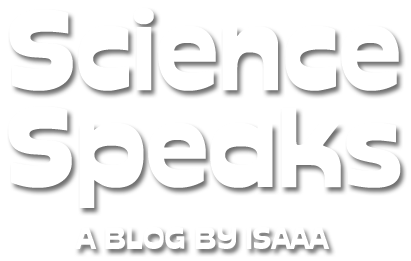New Double Helix Focuses on Gene Editing
| |
ISAAA, through the Philippine Department of Agriculture Biotechnology Program Office's Know The Science: Strengthening Biotech Links project, has released the second issue of Double Helix, the first and only magazine supplement on agricultural biotechnology (agbiotech) for senior high school students taking the Science, Technology, Engineering, and Mathematics (STEM) strand in the country.

Magazines aid classroom instruction
Magazines are wonderful supplements to classroom instruction as they expose students to a wide variety of content and resources. Magazines offer high-interest content to young students, as well as activities that allow them to apply the concepts to real-life situations. Double Helix magazine offers short and well-written articles with illustrations to complement the topics in each issue. The magazine is produced to provide a variety of interesting topics on biosciences targeting senior high school students.
Double Helix focuses on gene/genome editing
Ten years ago, Drs. Jennifer Doudna and Emmanuelle Charpentier published their paper describing the gene editing tool CRISPR-Cas9, which acts as a precise pair of molecular scissors that can cut a target DNA sequence, directed by a customizable guide. Since then, CRISPR has become an important tool because it allows scientists to rewrite almost any organism's genetic code. It is simpler, cheaper, faster, and more precise than previous gene editing techniques. The tool also has a wide range of applications in agriculture and medicine.
In the first issue of Double Helix, the eight-page magazine presented the process of developing a biotech crop, the countries where biotech crops are grown, biotech crops in the Philippines, Filipino biotech corn farmers, news briefs, and some cool and fun science activities and exercises for senior high school students and their teachers to enjoy. It has been highlighted in the exhibit during the 2022 National Biotechnology Week in November, reaching more students from different regions in the country.
The second issue of Double Helix focuses on gene/genome editing, one of the new breeding techniques that scientists use to develop better crop varieties in less time. The magazine explains how gene editing works and presents two gene editing tools — CRISPR and TALENs. This issue also includes the current gene editing R&D initiatives in the country that are being conducted in various institutions. An article in the magazine also presents the genome-edited products in the market, including CalynoTM High Oleic Soybean Oil, Sicilian Rouge High GABA tomato, “Madai” red sea bream, and the pufferfish “torafugu.” Lastly, this issue's Science Activity, What is DNA? is an illustrated guide that allows students to do a simple DNA extraction exercise in class or even at home. Some of the magazine’s pages contain QR codes for information materials published on the ISAAA Inc. website that are related to the feature articles.
Double Helix magazine is free to download from the ISAAA Inc. website. It is also free to use, and interested high schools can get in touch with the ISAAA Inc. team if they want to use the magazine in their instruction. A Teacher's Companion that includes a guide to related ISAAA Inc. publications and suggested quizzes on specific page topics is also available to help teachers navigate through the magazine’s pages.
Download Double Helix issues from the ISAAA Inc. website. For inquiries, send an email to double.helix@isaaa.org
| Newer Post | Archive | Older Post |
Science Speaks is ISAAA Inc.'s official blog. Weekly blog articles, authored by ISAAA writers, partners, and invited contributors, aim to help share, disseminate, and promote scientific knowledge and its vital role in achieving global agricultural sustainability and development. Your support to Science Speaks will help us achieve this goal. You can help us by donating as little as $10.

